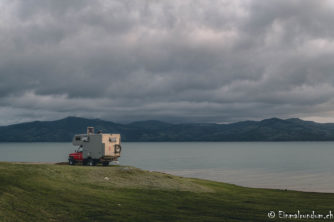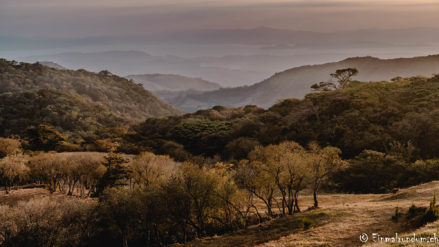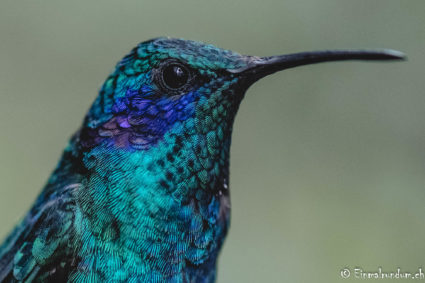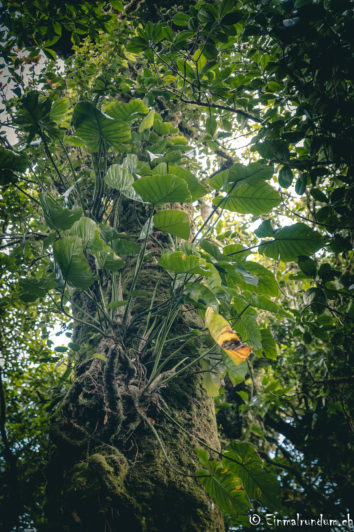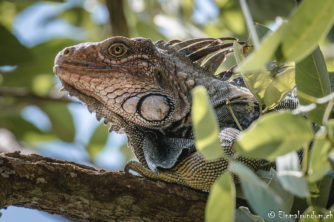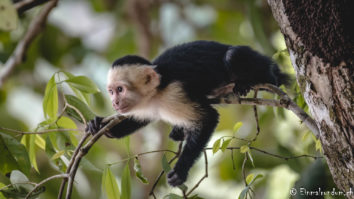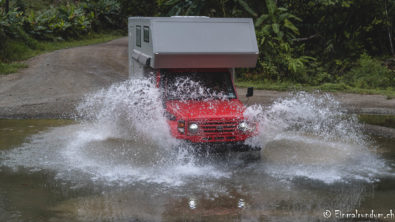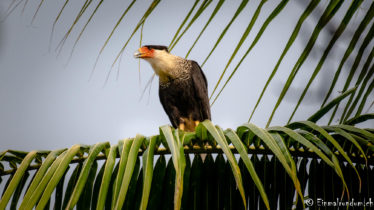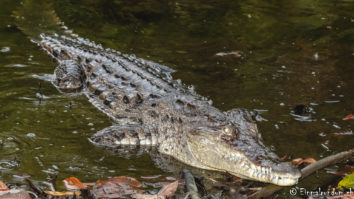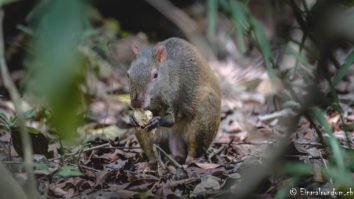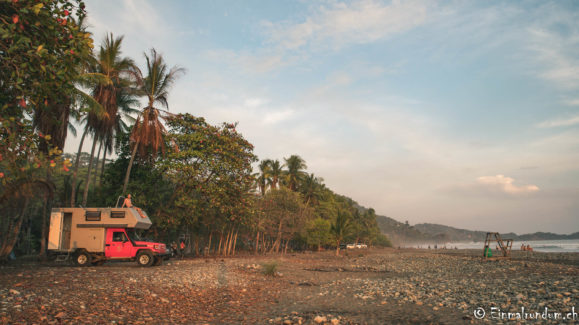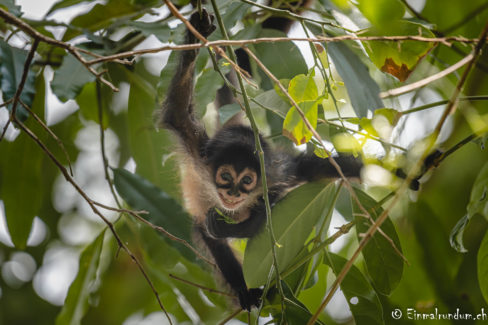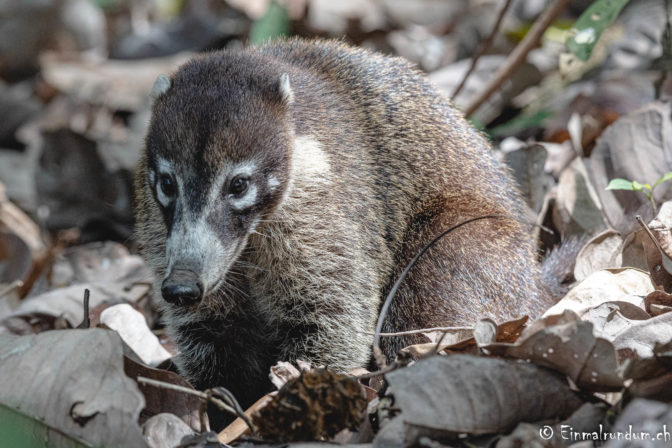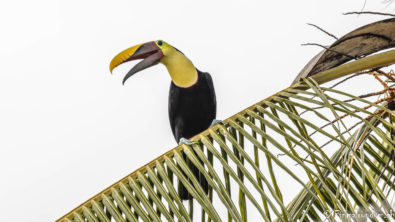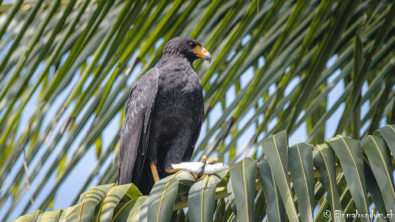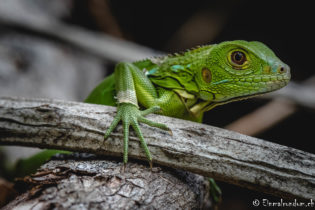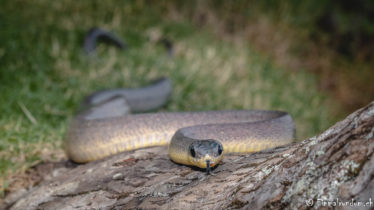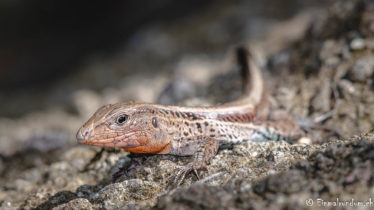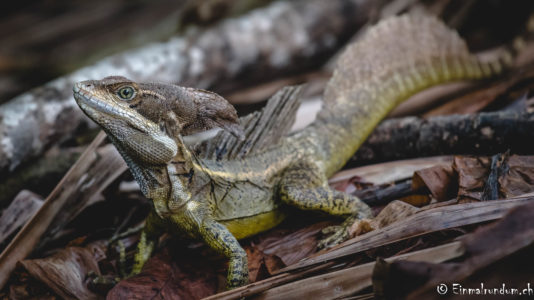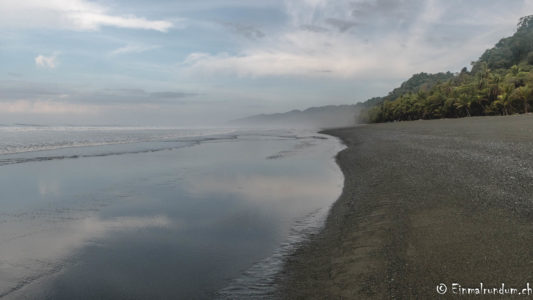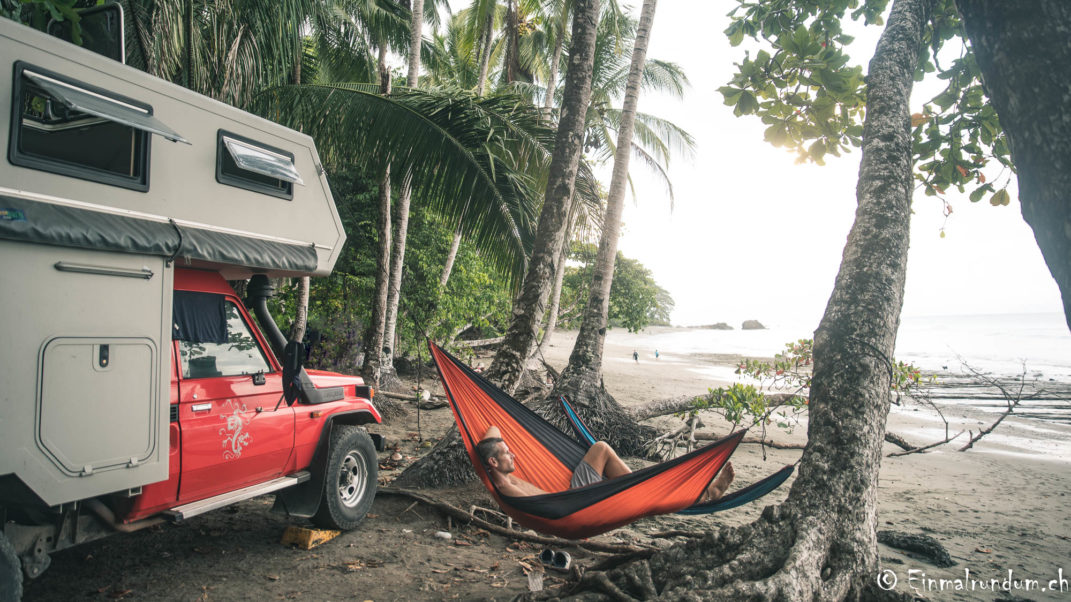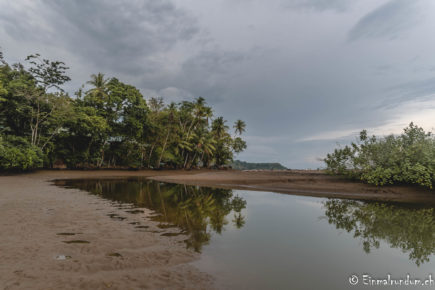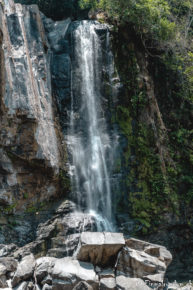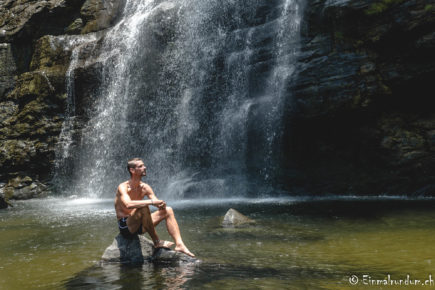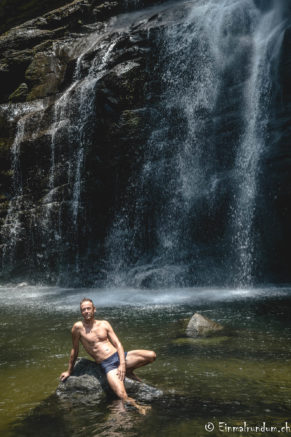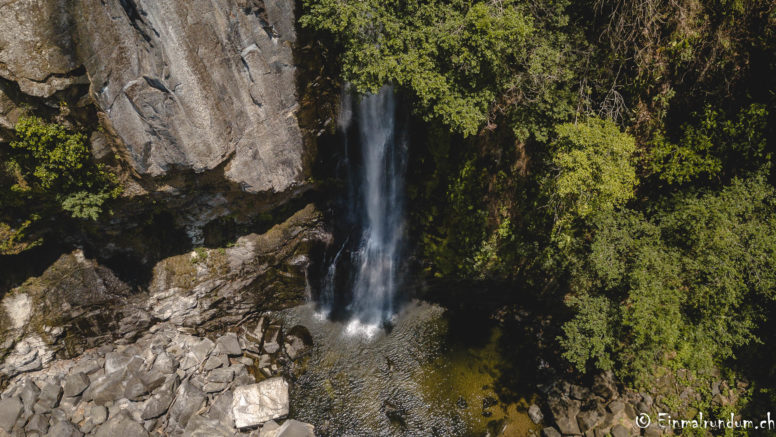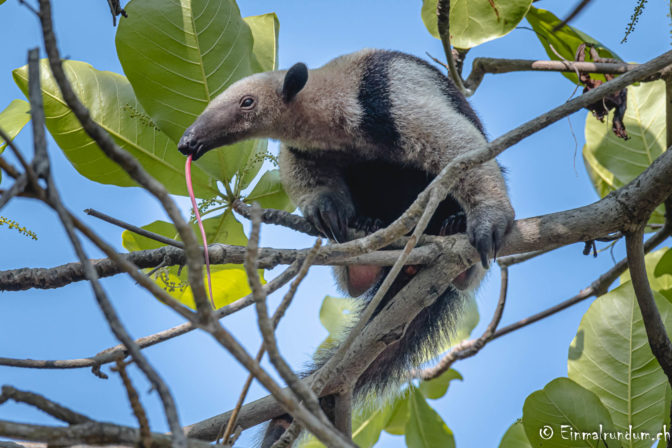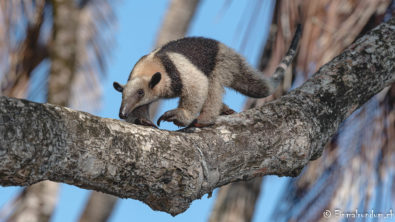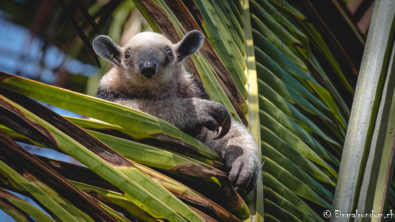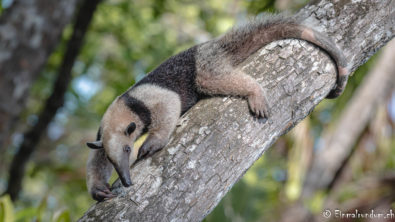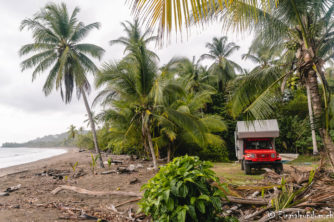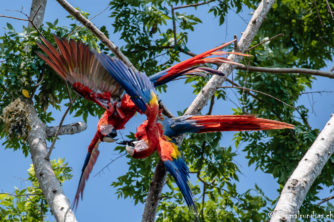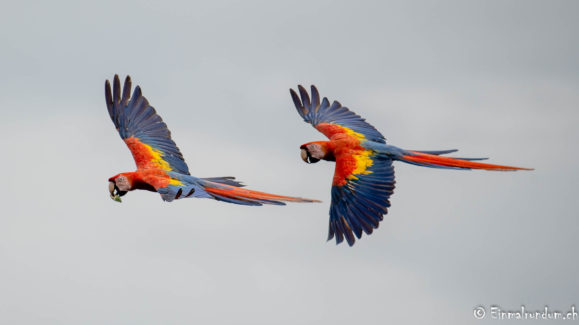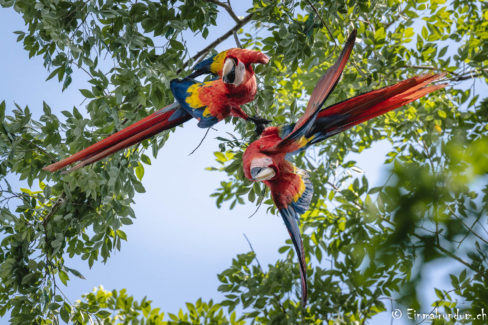NATIONAL PARKS IN COSTA RICA
Curve by curve we slowly drive into higher and therefore cooler regions of Costa Rica. We are at lake Arenal, which takes its name from the volcano that sits on its shore. The nights are pleasantly fresh and we can finally sleep again without sweating. The area around the water reservoir is considered a bird’s paradise and we set out to find some of these feathered critters.
There is a small nature park on the outskirts of La Fortuna that was founded two decades ago and ever since its reforestation, it offers a home to wildlife of all kinds. And it is really amazing how many animals and especially birds can be found here. Quiet and amazed, we sit on a bench for at least an hour and watch what is flying by. Frogs and sloths almost become a minor matter besides all those colorful birds…
CLOUD FORESTS
On a bumpy road we continue to Monteverde. The place is known for its humid microclimate and its species-rich cloud forests. The famous Monteverde Cloud Forest Reserve offers shelter to countless wildlife species, including the jaguar, the ocelot and the colorful and extravagantly feathered quetzal. We try to explore the area a bit off the beaten track and away from the main tourism and wander on our own through the woods right at the edge of the protected areas, marveling at the trees covered with all sorts of mosses and lichens, bromeliads and orchids. Unfortunately, we don’t encounter with one of the big cats. Instead, small hummingbirds buzz around our heads and look for nectar on colorful flowers.
For a change, we treat ourselves to a little fun and go on a zip lines tour, gliding through these treetops. Thomas enjoys the adventure and spreads his arms while flying whereas Stefan is rather relieved when he has solid ground under his feet again. ? Especially the last attraction of the adventure park has it all! One jumps from a wobbly platform 40 meters down into nothingness, attached on a single rope only… We literally lose our breath and our pulse is still racing even after we long have released the snap hooks and took off the climbing harness.
On the way back, we are lucky and experience one of our true Costa Rica highlights! A quetzal flies across the road just in front of our car and lands in sight in a tree next to us. At close range we can observe the rare bird with the long tail feathers for at least half an hour. Again and again we heard about this bird, which by the way is the national animal of Guatemala, and now we finally see it with our own eyes.
BACK ON THE COAST
After a few days we leave the cooler realms again and drive back to the hot Pacific coast. On our way further south, we visit the probably most famous and thus also most touristic national park of Costa Rica. But the park, with the sounding name Manuel Antonio, lives up to its reputation and we discover a great many animals. The howler and spider monkeys we already saw in different other locations play here in the same tree and hunt each other through the canopy. And for the first time we see the small and incredibly cute squirrel monkeys which have the nickname Titi monkey. They can only be found here in Costa Rica.
The beaches in the National Park are also beautiful and we share them with a family of raccoons and lots of capuchin monkeys. We enjoy the whole day with long walks on the paths through the park even if we are not the only visitors…
A LAST SIDE TRIP
At the end of our journey through Costa Rica we want to visit the Corcovado National Park on the Osa Pensinsula. This peninsula is considered wild and undeveloped and is said to house the country’s largest contiguous primary rainforest.
And we are not disappointed. Thanks to our off-road vehicle, neither the bumpy, kilometer-long dirt roads nor the streams that run through the area like veins are an obstacle, and so we get to many remote corners of the peninsula. There are not many tourists here anymore and we enjoy lonely nights on wonderful long stretched beaches. We hike in the humid tropical heat through the forest along the sea in search of animals and find monkeys and again snakes, crocodiles and coatis.
To cool off, we find crystal clear streams and if they also form a small natural pool before they flow into the sea, the bathing fun is perfect. A detour brings us to an impressive waterfall – no matter of course at the end of the dry season where in most places only a small brook meanders in otherwise empty, broad river beds. Of course, again we don’t miss the refreshing swim after the hike. If only the subsequent ascent from the gorge back to the car would not be so strenuous and sweaty…
One day we discover an anteater hiding in a tree right next to our bush camp. Thanks to patient waiting – we simply make ourselves a coffee in our galley – we can observe it up close and personal as it decides that the two bipeds with camera probably are no danger and so it slowly climbs down the tree trunk and disappears into the undergrowth. In the morning we wake up to the croaking voices of the big, bright red macaws. They seem to almost live here in flocks and nest in a tree next to our camp spot with the anteater.
It is truly paradisiac here in Costa Rica and we end up spending much more time in this with national parks studded country than planned. But now the rainy season is just around the corner and the oppressive, humid heat is becoming unbearable. That’s why we leave paradise and cross the border into Panama, the last country on our trip through Central America.
[sgpx gpx=”/wp-content/uploads/gpx/Blog 29 Nationalparks in CostaRica_10000Pkte_korrigiert.gpx”]
